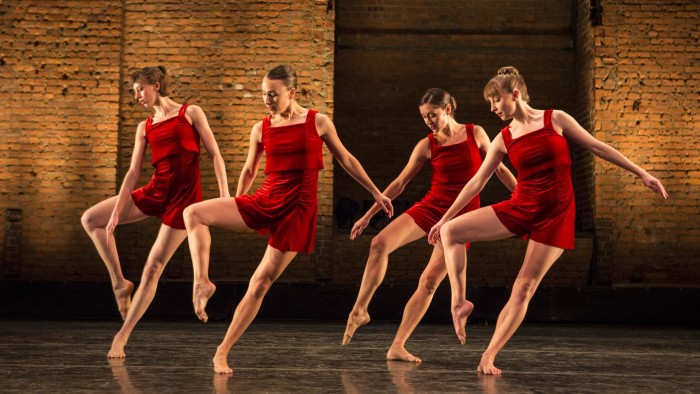Pam Tanowitz, Joyce Theatre, New York – review

Simply sign up to the Life & Arts myFT Digest -- delivered directly to your inbox.
The excitement of Merce Cunningham’s dances depends almost entirely on their steps and architecture: no story or musical correspondence to help. And even the frame evanesces, so we are entranced by one passing moment after another, as in an Elysium where time never grows old.
Such a rigorous calculus of freedom and constraint may explain why the New Yorker Pam Tanowitz, aged 44, has almost the whole School of Cunningham to herself, and why her work would need to achieve exceptional authority – to have everything in place – before it could emerge from small downtown theatres into the larger arena of the Joyce, where it debuted earlier this week before a rapt house.
Passagen, to a John Zorn string sonata, was a spacious duet; the populous Heaven on One’s Head pressed into the wings and on to the stage’s lip. But both premieres revelled in polarities of speed, texture and direction, with no blur between extremes. Both dances were imbued with a clarity that never hardened into rigidity.
For Heaven on One’s Head, the variously spiky, plucky and ethereal Nancarrow string quartets nos. 1 and 3, performed live by the excellent Flux ensemble, perfectly complemented the choreography, as did costumes by Reid Barthelme that brought out the contrast between a dancer’s breadth of shoulder and her majestically straight spine.
Tanowitz shares with Nancarrow and Zorn a modernist affectlessness that can easily slip into aimlessness. These dances, however, exuded purpose. They constantly traced their parameters – mapped space. In Passagen, standouts Melissa Toogood and Maggie Cloud switched directions so sharply and often that they seemed to be carving a diamond within the stage’s rectangle. For Heaven, lines of dancers executed unison patterns near the wings while more anarchic solos and duets seized the centre, and vice versa. Costumes in the same plush red velvet as the Joyce curtain reinforced this exchange between outside and inside, container and dance, anticipated end (when the curtain falls) and present moment.
The through-the-looking-glass effect extended to the ballet idiom that Tanowitz has adopted – and tweaked – more thoroughly here than before. She has displaced the accents just enough that you suddenly wonder what exactly ballet is and whether these moves qualify: philosophical musings that add to more immediate joys.

Comments